
The Municipal Art Society of New York (MAS) is a non-profit membership organization for preservation in New York City, which aims to encourage thoughtful planning and urban design and inclusive neighborhoods across the city.

Skidmore, Owings & Merrill LLP (SOM) is an American architectural, urban planning and engineering firm. It was founded in 1936 by Louis Skidmore and Nathaniel Owings in Chicago. In 1939, they were joined by engineer John Merrill. The firm opened its second office, in New York City, in 1937 and has since expanded, with additional offices in San Francisco, Los Angeles, Washington, D.C., London, Melbourne, Hong Kong, Shanghai, Seattle, and Dubai.

The Seagram Building is a skyscraper at 375 Park Avenue, between 52nd and 53rd Streets, in the Midtown Manhattan neighborhood of New York City. Designed by Ludwig Mies van der Rohe along with Philip Johnson, Ely Jacques Kahn, and Robert Allan Jacobs, the high-rise tower is 515 feet (157 m) tall with 38 stories. The International Style building, completed in 1958, initially served as the headquarters of the Seagram Company, a Canadian distiller.

Harry Bertoia was an Italian-born American artist, sound art sculptor, and modern furniture designer.
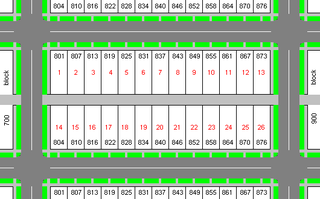
A city block, residential block, urban block, or simply block is a central element of urban planning and urban design.

The Citigroup Center is an office skyscraper in the Midtown Manhattan neighborhood of New York City. Built in 1977 for Citibank, it is 915 feet (279 m) tall and has 1.3 million square feet (120,000 m2) of office space across 59 floors. The building was designed by architect Hugh Stubbins, associate architect Emery Roth & Sons, and structural engineer William LeMessurier.
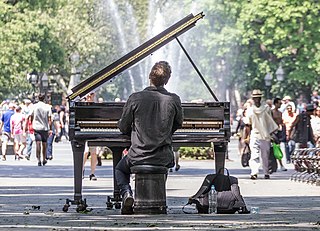
Placemaking is a multi-faceted approach to the planning, design and management of public spaces. Placemaking capitalizes on a local community's assets, inspiration, and potential, with the intention of creating public spaces that improve urban vitality and promote people's health, happiness, and well-being. It is political due to the nature of place identity. Placemaking is both a process and a philosophy that makes use of urban design principles. It can be either official and government led, or community driven grassroots tactical urbanism, such as extending sidewalks with chalk, paint, and planters, or open streets events such as Bogotá, Colombia's Ciclovía. Good placemaking makes use of underutilized space to enhance the urban experience at the pedestrian scale to build habits of locals.

Amanda Jay Mortimer Burden is a principal at Bloomberg Associates, an international consulting service founded by Michael Bloomberg as a philanthropic venture to help city governments improve the quality of life of their citizens. She was the director of the New York City Department of City Planning and chair of the City Planning Commission under Mayor Bloomberg from 2002 to 2013.

53rd Street is an east–west street in Midtown Manhattan, New York City, which measures 1.83 miles (2.94 km) long. The street runs westbound from Sutton Place across most of the island's width, ending at DeWitt Clinton Park at Eleventh Avenue.

The CBS Building is a 38-story, 491-foot-tall (150 m) tower at 51 West 52nd Street in the Midtown Manhattan neighborhood of New York City. It is the headquarters of the CBS broadcasting network. The building was constructed from 1961 to 1964 and was the only skyscraper designed by Eero Saarinen, who referred to the building as the "simplest skyscraper statement in New York". The interior spaces and furnishings were designed by Saarinen, then Florence Knoll Bassett after the former's death. The building was also the headquarters of CBS Records before the early 1990s.
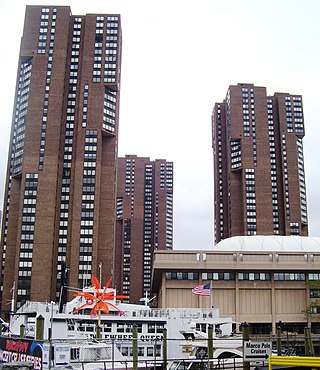
Waterside Plaza is a residential and business complex located on the East River in the Kips Bay section of Manhattan, New York City. It was formerly a Mitchell-Lama Housing Program-funded rental project.
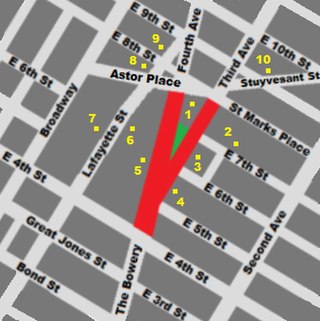
Cooper Square is a junction of streets in Lower Manhattan in New York City located at the confluence of the neighborhoods of Bowery to the south, NoHo to the west and southwest, Greenwich Village to the west and northwest, the East Village to the north and east, and the Lower East Side to the southeast.

Beverly Willis was an American architect who played a major role in the development of many architectural concepts and practices that influenced the design of American cities and architecture. Willis' achievements in the development of new technologies in architecture, urban planning, public policy and her leadership activities on behalf of architects are well known. Her best-known built-work is the San Francisco Ballet Building in San Francisco, California. She was a co-founder of the National Building Museum, in Washington, D.C., and founder of the Beverly Willis Architecture Foundation, a non-profit organization working to change the culture for women in the building industry through research and education.

The Ford Foundation Center for Social Justice is a 12-story office building in East Midtown Manhattan in New York City. Designed by architect Kevin Roche and engineering partner John Dinkeloo in the late modernist style, the building was one of the first that Roche-Dinkeloo produced after they became heads of Eero Saarinen's firm.

The East River Greenway is an approximately 9.44-mile-long (15.19 km) foreshoreway for walking or cycling on the east side of the island of Manhattan on the East River. It is part of the Manhattan Waterfront Greenway. The largest portions are operated by the New York City Department of Parks and Recreation. It is separated from motor traffic, and many sections also separate pedestrians from cyclists. The greenway is parallel to the Franklin D. Roosevelt East River Drive for a majority of its length.

The Manufacturers Trust Company Building, also known as 510 Fifth Avenue, is a commercial building at the southwest corner of West 43rd Street and Fifth Avenue in Midtown Manhattan, New York City. Opened in 1954, it is the first bank building in the United States to be built in the International Style. Charles Evans Hughes III and Gordon Bunshaft of Skidmore, Owings & Merrill (SOM) designed the building, along with Roy O. Allen and project manager Patricia W. Swan. The interior was designed by Eleanor H. Le Maire, while Harry Bertoia was hired as an artist for some of the building's artwork. 510 Fifth Avenue was built as a bank for the Manufacturers Trust Company, whose president Horace C. Flanigan wanted the design to be inviting to customers.

Tactical urbanism, also commonly referred to as guerrilla urbanism, pop-up urbanism, city repair, D.I.Y. urbanism, planning-by-doing, urban acupuncture, and urban prototyping, is a low-cost, temporary change to the built environment, usually in cities, intended to improve local neighbourhoods and city gathering places.
The City Club of New York is an independent, not-for-profit organization based in New York City.
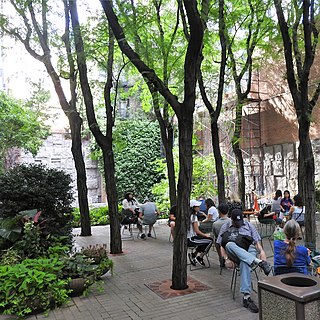
Greenacre Park is a privately owned, publicly accessible vest-pocket park located on East 51st Street between Second and Third Avenues in the Turtle Bay neighborhood of Manhattan, New York City.
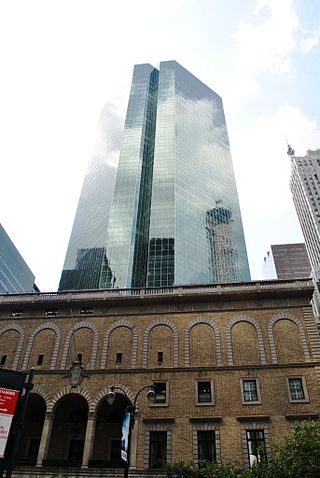
Park Avenue Plaza is an office building at 55 East 52nd Street in the Midtown Manhattan neighborhood of New York City. The 575-foot (175 m) tall, 44-story building was designed by Skidmore, Owings & Merrill (SOM) for development company Fisher Brothers and was completed in 1981. Despite its name, the building is not actually on Park Avenue, although it abuts the Racquet and Tennis Club building along the avenue. Rather, the building is in the middle of a city block, with entrances on 52nd and 53rd Streets.





















